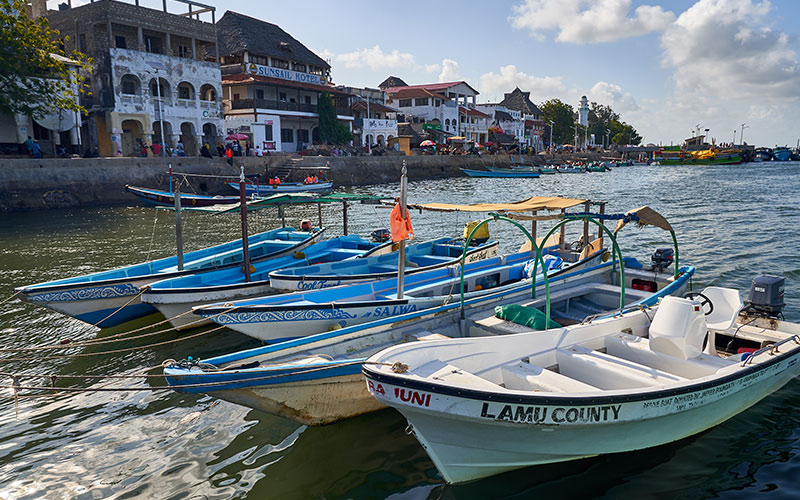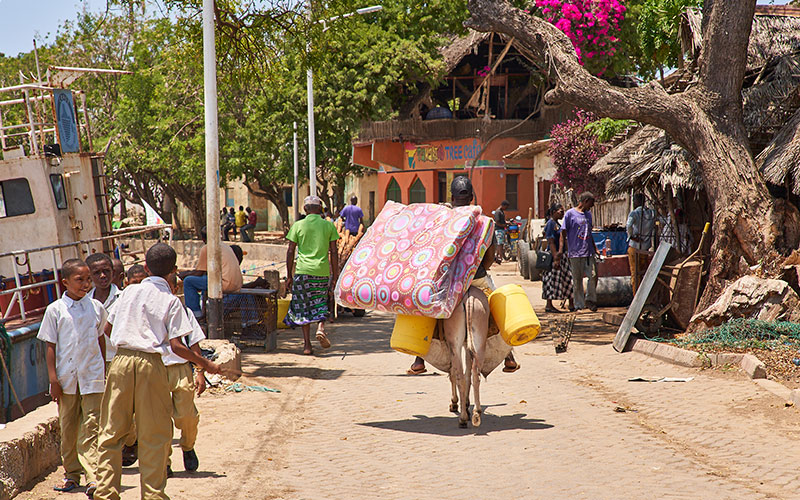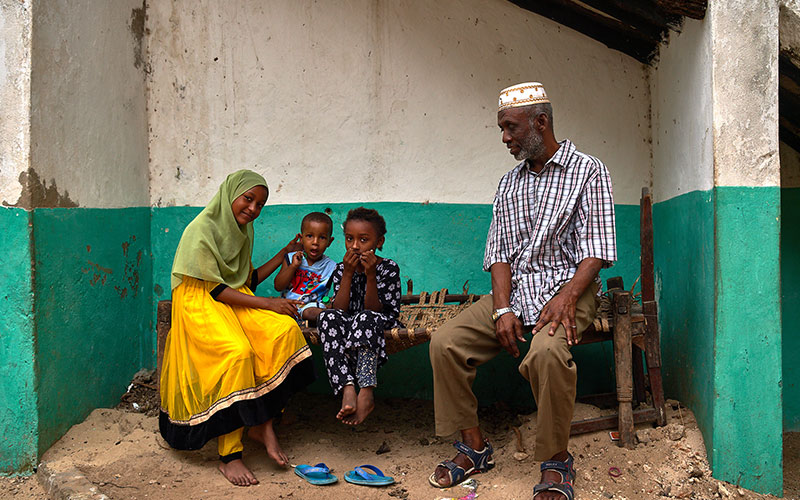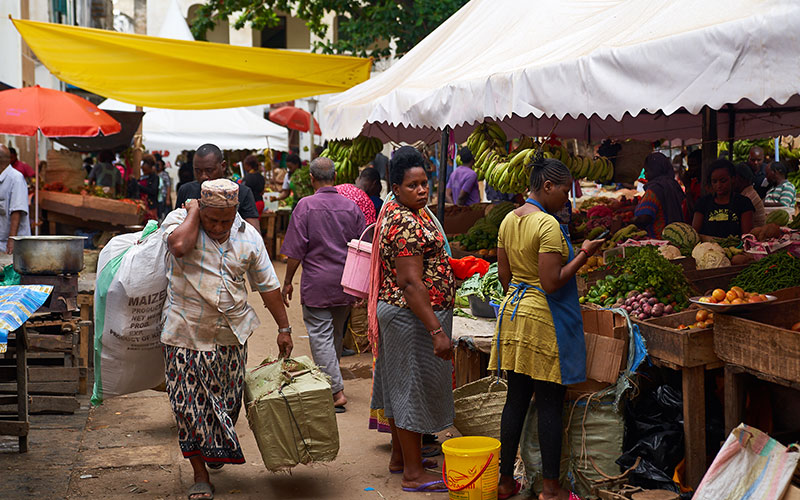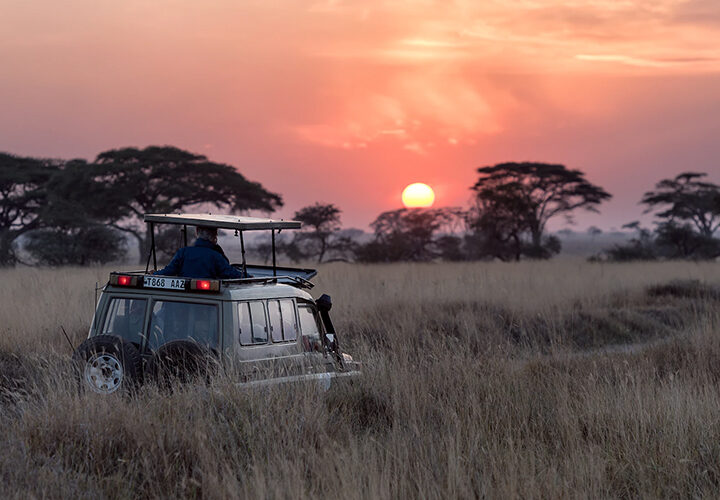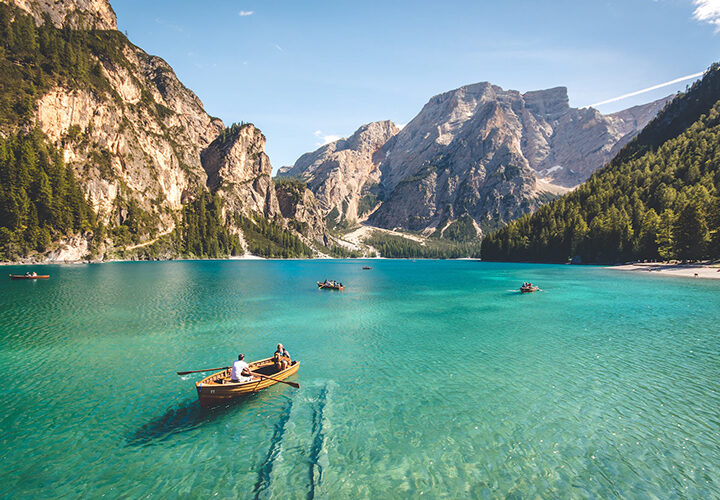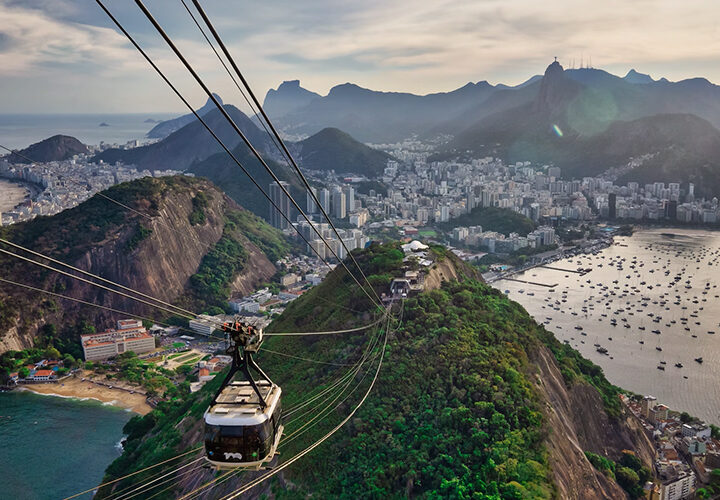Lamu Island
A bright red and blue parrot raced our tiny plane down the runway as we came in to land at Manda Airport while an unconcerned pedestrian ambled by in the opposite direction along the edge of the tarmac.
We had only a few moments to orient ourselves and grab our luggage from the handcart (no moving luggage belt here!), before joining the confusion of new arrivals and eager porters competing to load our suitcases onto their shoulders. We moved with the crowd out of the airport to find our host and the boat he’d engaged to take us across the Manda Channel to Old Lamu Town. On the left of the path, we, the new arrivals, stared at 5 men sitting around a goat they’d just slaughtered, hanging in a tree by the gates of the airport. None of the locals gave the scene a second glance.
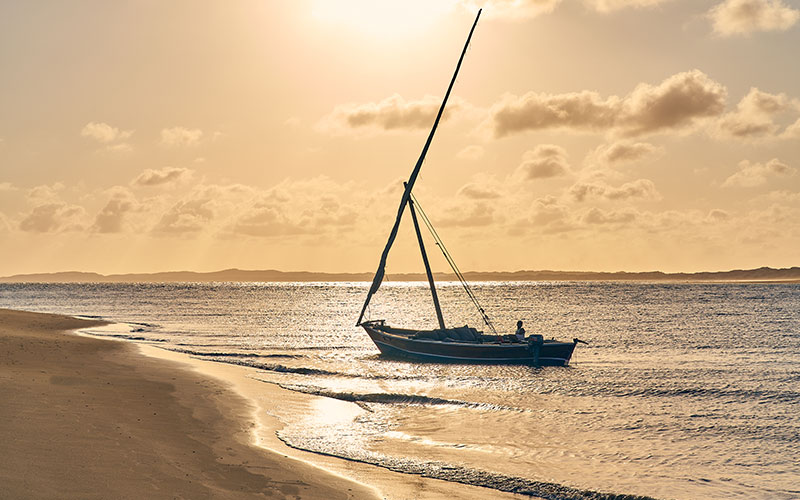
We’d arrived in the Lamu archipelago of islands where we would encounter a way of life that has continued to move to its own rhythm for 700 years and where any pre-conceived notions we had would be left in the dust.
Lamu Town is the commercial and cultural hub of the four islands that make up an archipelago on the North Eastern coast of Kenya. For centuries, it was the center of the Arabic, African, Indian and European trading routes in the region, resulting in a unique mashup of cultures that drew us half way across the world to explore. It is believed to be one of the oldest coastal Swahili settlements, and is a UNESCO World Heritage site.
The boat crossing gave us a dramatic first glimpse of Lamu Town’s bustling but dilapidated seafront road, the Corniche, with white-washed town houses closely thronged rising behind it.
This coast road, lined with a mix of small hotels, local restaurants and administrative government buildings, is the widest thoroughfare on Lamu. Every day, small crowds of men and, less frequently, women sit in the patches of shade along it chatting, watching the world go by or waiting for a potential customer for whatever goods or service they have for sale.
The most vocal of these were the fast-talking boat captains whose daily goal was to persuade us onto their vessels for day trips, sunset cruises or short hops around the island. The options range from basic water taxis to gaudily decked out traditional wooden dhows, sailboats inherited from Lamu’s Omani colonizers in the 13th Century. The methods of persuasion were as varied as the prices they charged and could get a little annoying, though a firm “No” was usually accepted with a pragmatic shrug of the shoulders.
To walk down the Corniche, or in fact any street in Lamu, is to run the gauntlet of donkeys, sheep and goats and their droppings. We called dodging these the Lamu shuffle. Donkeys are the main mode of transportation and, tragically, are often seen burdened with impossibly large loads by their owners. “Boda bodas” are motorbike taxis that provide the other mode of land transportation because there are no private cars allowed on Lamu. However, we found that the town itself was best explored on foot with Ziwa, an official guide recommended by our host. The old town is an atmospheric labyrinth of dark narrow streets and alleyways in varying states of decay without street signs, so the creative names and graffiti painted by the small shop owners soon became recognizable landmarks in getting ourselves around. Some of the street scenes were almost Dickensian in their squalor. People make do with very little here and yet would smile and greet us as we passed.
Homes in Lamu range from palatial riyadhs owned by foreigners, designed in the Swahili architectural style with their courtyards and pools hidden behind heavily carved Arabic doors, to mud-walled hovels in the oldest parts of the town without electricity or running water. We were lucky enough to be staying in one of the oldest riyadhs in the old town, a welcome oasis from the clamor of Lamu and the perfect place to while away sunsets on the breezy rooftop.
The Lamu Fort, museum and the mosques were another way to orient ourselves within Lamu’s streets, and were useful in providing some historical context for the archipelago. The Arabic influence remains strong, with Lamu being recognized as one of the most important centers for Islamic studies in East Africa. The first call to prayer every morning before dawn, sent forth from the dozens of mosques around the island like a chain reaction, provided an effective alarm clock and was one of the most memorable soundscapes of Lamu’s ancient religious life, five times a day.
The busy market at the foot of the Fort is an explosion for all the senses. It provides a daily meeting place for residents and was teeming with the fruits used in the exotic juices Lamu is known for; although tempting, we passed on these as the water used to wash the fruit comes from Lamu’s less than reliable water system. Drinking bottled water is a must for foreigners in Lamu.
“Everyone knows everyone in Lamu and everyone knows everything that happens” said Ziwa. It’s true. People were genuinely friendly and called out “Jambo” to us as we walked by. They are also very interested in everything you do, and will make it their business to know where you’re staying, whose boat taxi you’ve been on, and who you’ve been talking to. Their friendliness does not belie the underlying commercial nature of pretty much every interaction we had with the local folk. Everyone is on the hustle and trying to make money in a fragile economy reliant on fishing and tourism which has been hurt by political instability and terrorist activity elsewhere in Kenya.
The recent increase in number of the “Lamu Beach Boys”, unemployed young men who hang out on the streets looking for a daily hustle, is frowned upon but appears difficult to police. We were warned to politely refuse all their offers of assistance and requests for money. Beware also the random “tour guide” who attaches himself to you, offering to help you find your way, and then expects you to do “something” for him. The ever-present hustle can make for an intense experience even for seasoned travelers.
Laid-back Shela, a charming village 3km up the coast, was a welcome respite. From Lamu, we reached Shela by foot in 45 minutes. After the narrow streets of Lamu, it felt good to walk along the open coast, although water taxis take just 15 minutes.
Peaceful and elegantly rustic, Shela embodies the epitome of bohemian barefoot chic and has been the secret Indian Ocean hideaway for European jetsetters for decades. Its whitewashed houses are set on sandy streets with expensive boutiques, restaurants and hotels dotted here and there. The most famous of its hotels is Peponi’s, built in the 1960s and still considered to be one of the best in Kenya. Its unbeatable location, with terraces overlooking the start of Shela Beach, made it our favorite hangout spot for grabbing a drink before going on to explore the breathtaking 10 miles of unspoilt towering sand dunes sloping down to the warm Indian Ocean. During the weekdays Shela Beach is often blissfully deserted but we were cautioned to keep an eye on our belongings and avoid walking alone too far from civilization as crime towards tourists is not unknown, even in Shela.
Life in Shela is ruled by the tides which can cut off the coastal route back to Lamu in the evenings. We were advised to get a copy of the tide tables to plan our trips around the islands. The only way to get back to Lamu in the evening, if you resist the urge to stay in Shela, is by boat: don’t be tempted to walk along the coast road at night, it’s not safe.
We chose to spend a night across the beach from Shela on Manda Island to enjoy the luxury of the beachfront Majlis Hotel and also to explore the Takwa ruins 10 km away. Takwa is the site of a prosperous town that existed on Manda between the 15th and 17th Century and was later abandoned for Shela when the fresh well water dried up. There is the option of taking a boat ride across the channel to Takwa but, feeling in need of exercise, we decided to go with a (challenging) cycle ride through uninhabited jungle in the centre of the island. Word of warning, there is still no water to be found en route: take plenty of water, a hat, and the services of a guide so that you don’t get lost.
Overall, Lamu feels safe, and its inhabitants, proud of this reputation, go out of their way to keep it that way. Beyond taking the usual precautions you would take in any new environment, feel free to allow Lamu’s 700-year-old rhythm to lull you into a sense of timelessness as it inevitably will.
Written by Isy Walton and edited by Jeremy Walton

